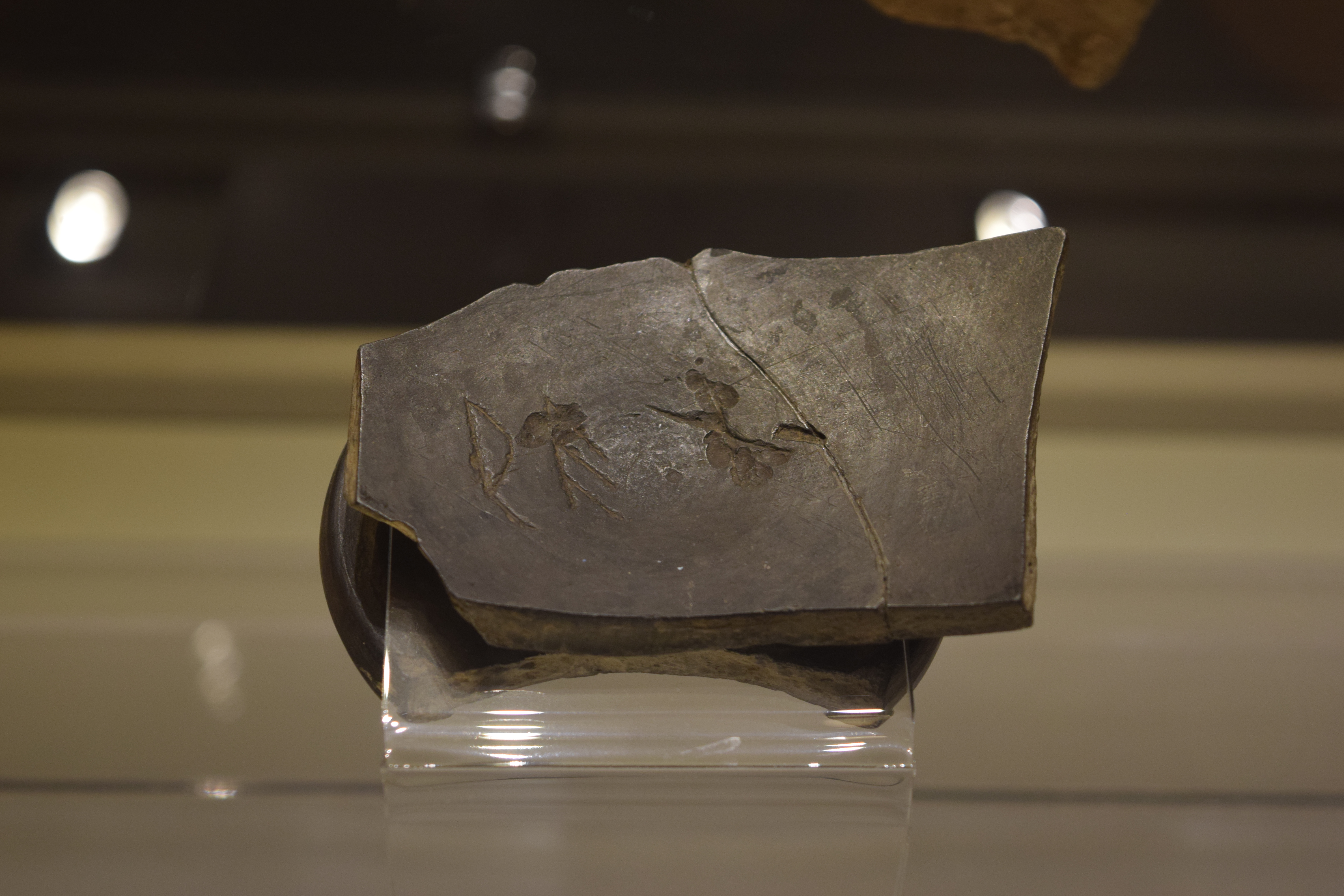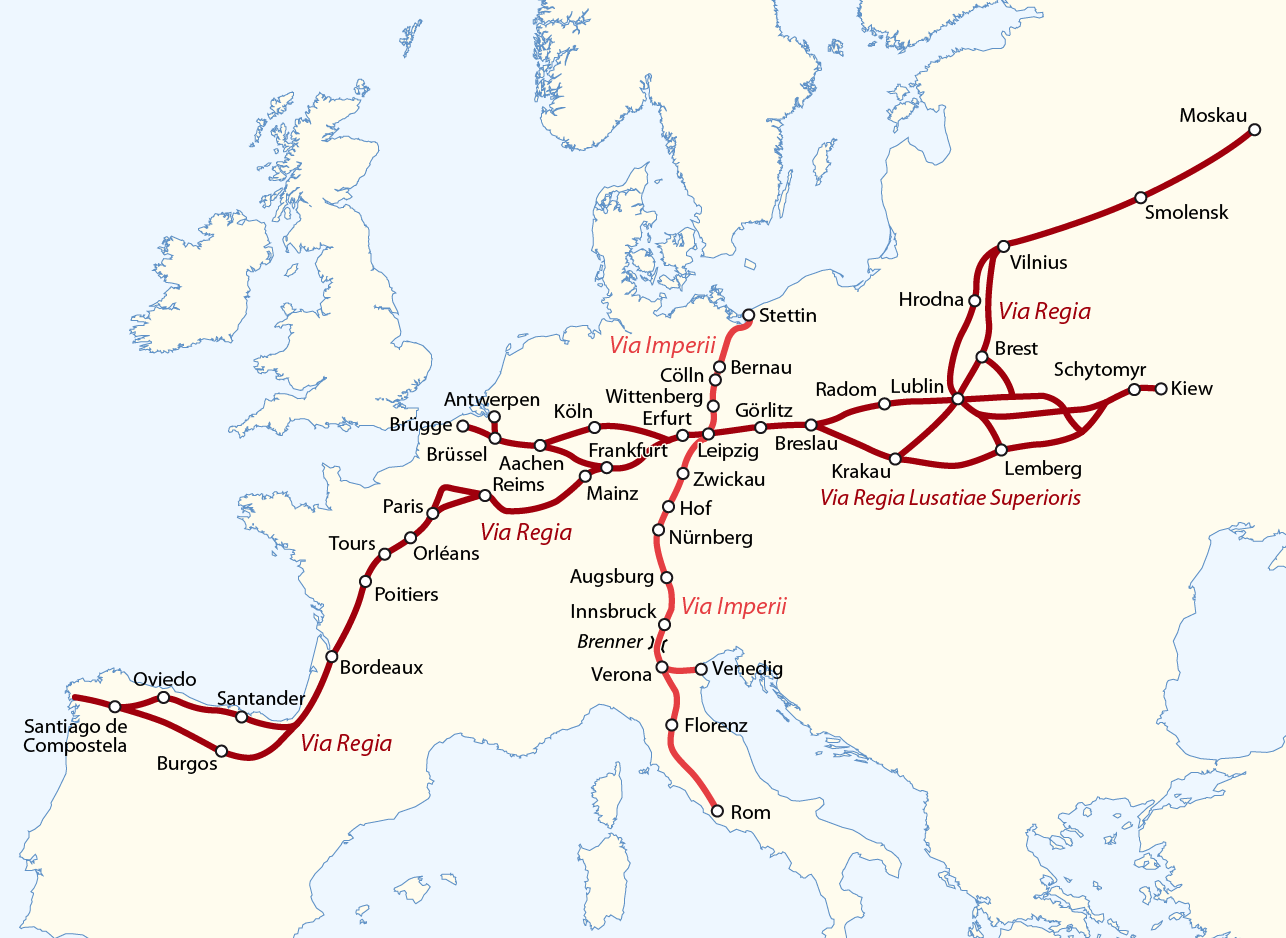|
Regia (other)
The Regia was a structure in the Forum of Ancient Rome, originally the residence of the Kings. Regia may also refer to: ;Latin: * Aqua regia, mixture of concentrated nitric acid and concentrated hydrochloric acid * Regia Anglorum, British medieval reenactment organisation * Bulla Regia, former Roman city near modern Jendouba, Tunisia * Editio Regia, third and the most important edition of the Greek New Testament of Robert Estienne * Via Regia, "King's Highway" * " Vivas Schola Regia", song of the Royal High School of Edinburgh. * Regia, a classical type of building. ;Italian: * Regia Marina, "Royal Navy" 1861-1946 * Regia Aeronautica, "Royal Air Force" 1923-46 * Scala Regia, "Royal Staircase" * Sala Regia (other), "Regal Room or Hall" ;Spanish: * Fuerza Regia, Mexican professional basketball team based in Monterrey See also * Regis (other) (Latin "of the king") * Regius (other) (Latin "royal" masculine adjective) * Regium (other) Regium ... [...More Info...] [...Related Items...] OR: [Wikipedia] [Google] [Baidu] |
Regia
The Regia ("Royal house") was a two-part structure in Ancient Rome lying along the Via Sacra at the edge of the Roman Forum that originally served as the residence or one of the main headquarters of kings of Rome and later as the office of the '' pontifex maximus'', the highest religious official of Rome. It occupied a triangular patch of terrain between the Temple of Vesta, the Temple of Divus Julius and Temple of Antoninus and Faustina. Only the foundations of Republican/Imperial Regia remain. Like the Curia it was destroyed and rebuilt several times, as far back as the Roman monarchy. Studies have found multiple layers of similar buildings with more regular features, prompting the theory that this "Republican Regia" was to have a different use. History According to ancient tradition it was built by the second king of Rome, Numa Pompilius, as a royal palace. Indeed, the Latin term ''regia'' can be translated as ''royal residence''. It is said that he also built the ... [...More Info...] [...Related Items...] OR: [Wikipedia] [Google] [Baidu] |
Regia Anglorum
Regia Anglorum (A term used by early writers in Latin texts, meaning ''Kingdoms of the English eople'), or simply Regia, is a Medieval reenactment organisation reenacting the life and times of the peoples who lived in and around the Islands of Britain from the time of Alfred the Great to Richard the Lionheart. Its members portray Anglo-Saxon, Viking, Norman and British living history from the period before the Norman Conquest. The society has gained in popularity as a result of being featured in prominent television programmes such as '' Michael Wood on Beowulf'', ''Time Team'' and '' A History of Britain. It was founded in 1986 by members formerly of The Norse Film and Pageant Society (which went on to become called ''the Vikings'') and has a large British membership. An unincorporated association, it claims to be one of the largest Early Middle Ages re-enactment societies in the world. The organisation comprises a number of local groups, mostly within the United Kingdom. Regi ... [...More Info...] [...Related Items...] OR: [Wikipedia] [Google] [Baidu] |
Bulla Regia
Bulla Regia was a Berber, Punic, and Roman town near present-day Jendouba, Tunisia. Its surviving ruins and archaeological site are noted for their Hadrianic-era semi-subterranean housing, a protection from the fierce heat and effects of the sun. Many of the mosaic floors have been left in place; others may be seen at the Bardo Museum in Tunis. There is also a small museum connected with the site. Names The Punic name of the town appears on its currency as (). This has been suggested to have been a contraction of (), meaning "House" or "Temple of Baal". The name Bulla Regia is Latin for "Royal Bulla". The epithet refers to its status as the Numidian capital under Masinissa. It was notionally refounded at the time of its elevation to colony status and formally named ' after its imperial sponsor Hadrian. History Berber town A Berber settlement probably predated the Punic one. Imported Greek ceramics dating to the 4th centuryBC have been found. Punic town Carthag ... [...More Info...] [...Related Items...] OR: [Wikipedia] [Google] [Baidu] |
Editio Regia
''Editio Regia'' (''Royal edition'') is the third and the most important edition of the Greek New Testament of Robert Estienne (1503–1559). It is one of the most important representatives of the '' Textus Receptus'', the first generation of printed editions of the Greek New Testament in history. It was named ''Editio Regia'' because of the beautiful and elegant Greek font it uses, known as the Grecs du Roi. It was edited by Estienne in 1550 at Paris. It is the first Greek Testament that has a critical apparatus. Estienne entered on the margins of the pages variant readings from 15 Greek manuscripts as well as many readings from the Complutensian Polyglot. He designated all these sources by symbols from α' to ιϛ'. The ''Complutensian Polyglot'' was signified by α'. The critical collation was the new subject, and although Estienne omitted hundreds of important variants from used witnesses, it was a significant early step towards textual criticism of the New Testament. ... [...More Info...] [...Related Items...] OR: [Wikipedia] [Google] [Baidu] |
Via Regia
The Via Regia (Royal Highway) is a European Cultural Route following the route of the historic road of the Middle Ages. There were many such ''viae regiae'' associated with the king in the medieval Holy Roman Empire. History Origins The Via Regia ran west–east through the centre of the Holy Roman Empire, from the Rhine at Mainz-Kastel (''Elisabethenstraße'') to Frankfurt am Main, trade city and site of the election of the King of the Romans, continuing along Hanau, the '' Kaiserpfalz'' at Gelnhausen, the towns of Steinau an der Straße, Neuhof, Fulda and Eisenach to Erfurt, a centre of woad production. It ran further eastwards to Eckartsberga, crossing the Saale river between Bad Kösen and Naumburg and reached Leipzig, another trade city. The eastern part continued through Upper Lusatia (''Via Regia Lusatiae Superioris'') along Großenhain, Königsbrück, Kamenz, Bautzen and Görlitz to Wrocław in Silesia with further connection to Kraków in Polan ... [...More Info...] [...Related Items...] OR: [Wikipedia] [Google] [Baidu] |
Vivas Schola Regia
''Vivas Schola Regia'', officially ''Scholae Regiae Edinensis Carmen'', is the school song, song of the Royal High School (Edinburgh), Royal High School of Edinburgh. The Latin lyrics were written by the Rector (academia), Rector, Dr. John Marshall, in 1895, and set to music by Alexander Mackenzie (composer), Sir Alexander Mackenzie, a former pupil of the school. James Trotter comments on Marshall's character and influence: 'The spirit which inspired him is well exhibited in his "Song of the High School."' The first two verses are sung with the refrain at the end of the annual school session, on the Commemoration and Prize Giving Day each July. The third line, 'sicut arx in colle sita' ('like a citadel placed on a hill': this is the literal meaning, not the one that Marshall used in his English translation) refers both to the situation of the school building on the slopes of Calton Hill and to the school crest, which shows a turreted castle on a rock. The school song, alon ... [...More Info...] [...Related Items...] OR: [Wikipedia] [Google] [Baidu] |
Regia (Building Type)
Regia is a classical building type, a place where a governing authority resides. It is among the ancient building types. Others are the tholos Τholos may refer to: * Tholos (architecture), a circular structure, often a temple, of ancient Greece and ancient Rome, and in classical or neoclassical architecture **Tholos (Ancient Rome), a structure found in the centre of the macellum **Tholo ..., the temple, the theater, the dwelling, and the shop. Buildings according to this type may be rectangular in plan with an interior courtyard. References Architecture {{architecture-stub ... [...More Info...] [...Related Items...] OR: [Wikipedia] [Google] [Baidu] |
Regia Marina
The ''Regia Marina'' (; ) was the navy of the Kingdom of Italy (''Regno d'Italia'') from 1861 to 1946. In 1946, with the birth of the Italian Republic (''Repubblica Italiana''), the ''Regia Marina'' changed its name to ''Marina Militare'' ("Military Navy"). Origins The ''Regia Marina'' was established on 17 March 1861 following the proclamation of the formation of the Kingdom of Italy. Just as the Kingdom was a unification of various states in the Italian peninsula, so the ''Regia Marina'' was formed from the navies of those states, though the main constituents were the navies of the former kingdoms of Sardinia and Naples. The new Navy inherited a substantial number of ships, both sail- and steam-powered, and the long naval traditions of its constituents, especially those of Sardinia and Naples, but also suffered from some major handicaps. Firstly, it suffered from a lack of uniformity and cohesion; the ''Regia Marina'' was a heterogeneous mix of equipment, standards and p ... [...More Info...] [...Related Items...] OR: [Wikipedia] [Google] [Baidu] |
Regia Aeronautica
The Italian Royal Air Force (''Regia Aeronautica Italiana'') was the name of the air force of the Kingdom of Italy. It was established as a service independent of the Regio Esercito, Royal Italian Army from 1923 until 1946. In 1946, the monarchy was abolished and the Kingdom of Italy became the Italy, Italian Republic, whereupon the name of the air force changed to Italian Air Force, Aeronautica Militare. History Beginnings At the beginning of the twentieth century, Italy was at the forefront of aerial warfare: during the colonization of Libya in 1911, it made the first reconnaissance flight in history on 23 October, and the first ever bombing raid on 1 November. During World War I, the Italian ''Corpo Aeronautico Militare'', then still part of the ''Regio Esercito'' (Royal Army), operated a mix of French fighters and locally built bombers, notably the gigantic Caproni aircraft. The ''Regia Marina'' (Royal Navy) had its own air arm, operating locally built flying boats. ... [...More Info...] [...Related Items...] OR: [Wikipedia] [Google] [Baidu] |
Scala Regia
Scala Regia ({{IPA-la, ˈskaːla ˈreːɡɪ.a; en, "Royal Staircase") is a term referring to a number of majestic entrance staircases, including: * The Scala Regia of the Vatican, a flight of steps designed by Gian Lorenzo Bernini (1663–1666) to connect the Vatican Palace to St. Peter's Basilica. * Main staircase of Villa Farnese at Caprarola * Entrance to the Ducal Palace of Lucca * Entrance to House of Lords, Westminster, United Kingdom Other staircase entrances include the Scala d'Oro in Venice Venice ( ; it, Venezia ; vec, Venesia or ) is a city in northeastern Italy and the capital of the Veneto region. It is built on a group of 118 small islands that are separated by canals and linked by over 400 bridges. The isla .... Renaissance architecture Baroque architectural features ... [...More Info...] [...Related Items...] OR: [Wikipedia] [Google] [Baidu] |
Sala Regia (other)
Sala Regia is the Italian translation of Regal Room or Hall. There are a number of such rooms in Italy. Among the best known are: * Sala Regia (Vatican) *Sala Regia of Palazzo del Quirinale {{Disambig ... [...More Info...] [...Related Items...] OR: [Wikipedia] [Google] [Baidu] |





